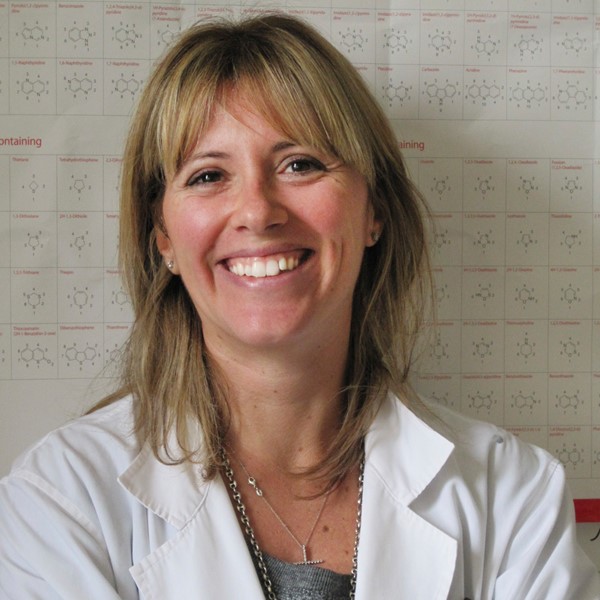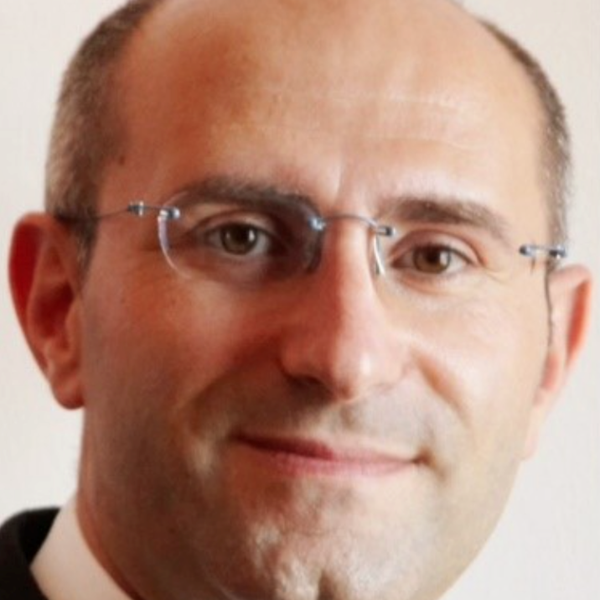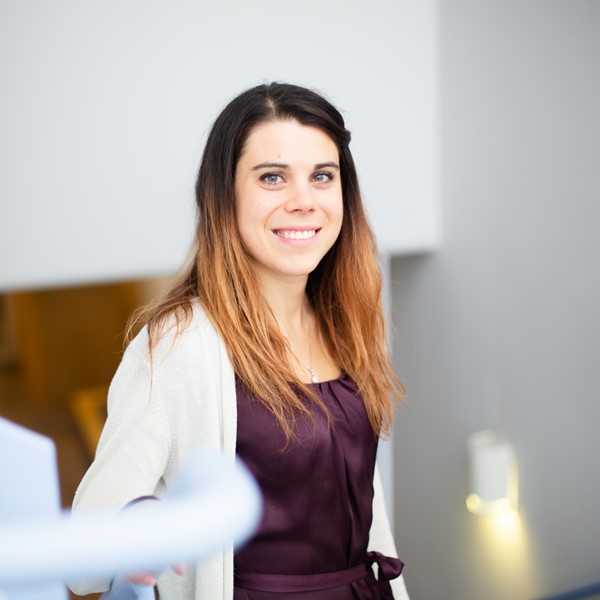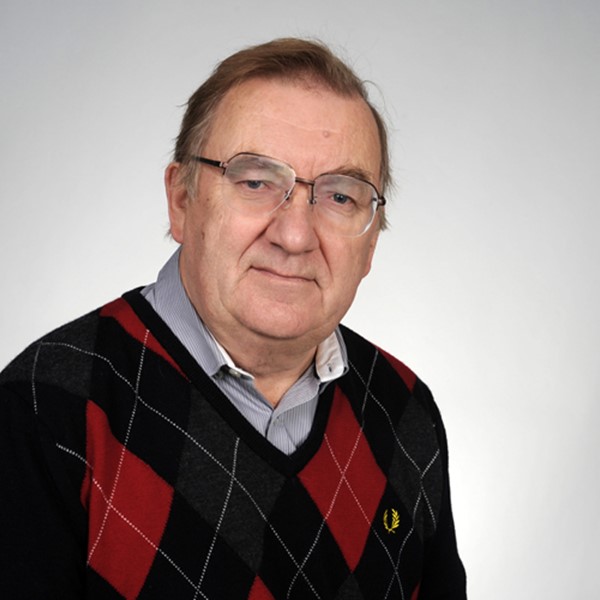Partnering Division: Success Stories

Graphene Flagship and beyond: Success stories for the partnering division
The Graphene Flagship's success stems not just from the research done within the Core project, but also from the collaborations with organisations and projects associated to the Graphene Flagship.
The Partnering Division Fringe session aims at promoting the success stories of the Associated Members and Partnering Projects in the field of graphene and related materials. Furthermore, this year marks the 10-year anniversary of the Graphene Flagship, hence this will be the opportunity to celebrate 10 years of successful collaborations between the Core project partners and the members of the Partnering Division.
Join us for this session at Graphene Week 2023, 4-8 September 2023 in Gothenburg, Sweden.
When: 6th September 2023, 14:30-15:30
Where: Room H1
Contact: graphene-eu@esf.org
Speakers
Bio: Klaudia Żerańska is an alumna of the Warsaw University of Technology, Faculty of Physics. Since 2014, she has been associated with the Nanostructures Group. Her scientific interests include thermal properties and EMI shielding effectiveness of modern nanocarbon materials in a wide frequency range - from visible light through microwaves to single terahertz. She received her PhD in physical sciences in 2021 with honors, for the thesis entitled "Novel nanocarbon based materials for EMI shielding".
She is an experienced scientist in the field of solid state physics. Her scientific achievements include thirteen scientific peer-reviewed articles, of which she is the corresponding and first author in four; numerous conference presentations, including the Graphene Automotive conference in Detroit, USA and the ESA Workshop on Millimeter-Wave Technology and Applications at the headquarters of the European Space Agency; and research fellowship at the University of Manchester and a postdoc at the University of California, Riverside.
Since 2022 she is a COO of nanoEMI and a CEO of nanoFLAKES (sister company to nanoEMI). Both companies aim to bring to the market a reliable and affordable graphene product.
Title: The road to build the company producing ultimate quality graphene flakes starting out of academic project.
Abstract: The nanotechnology realm is still at the stage where the technical feasibility, repeatability and scalability of the manufacturing processes are the main challenges. It is critical to be aware of major obstacles that one may face when taking a step forward from academic research project toward a successful commercialization. nanoEMI is still on its way to become a market leader; however, the experience we went through could be a good insight to improve the learning curve and comprehensive knowledge of the nano-tech society in the business and engineering fields.
Bio: Filippo Giannazzo (PhD) joined CNR-IMM as a Researcher in 2006 and is Research Director from 2020. He is expert in scanning probe microscopy methods for the characterization of carrier transport properties in advanced materials for micro and nano-electronics (wide bandgap (WBG) semiconductors, dielectrics, 2D materials and heterostructures). From 2016, he coordinated two EU-projects, GraNitE (http://granite.imm.cnr.it/) and ETMOS (http://etmos.imm.cnr.it/ ) on 2D materials integration with WBG semiconductors. He is author of >350 papers with >6200 citations (h-index=42) and an international patent.
Title: ETMOS: Epitaxial Transition Metal dichalcogenides Onto wide bandgap hexagonal Semiconductors for advanced electronics
Abstract: Silicon carbide (SiC) and group-III Nitrides (GaN, AlN, InN and their alloys) currently play a strategic role in energy efficient power conversion, high frequency electronics and optoelectronics. Combining the mature technology of these wide-bandgap (WBG) semiconductors with the outstanding functional properties of 2D materials, such as graphene and semiconducting transition metal dichalcogenides (TMDs), enables the development of advanced device concepts, such us ultra-fast 2D/3D heterojunction diodes and transistors, and solar-blind UV photodetectors.
Within the FlagERA ETMOS project (http://etmos.imm.cnr.it/), from April 1st 2020 to March 31st 2022, the integration of large area molybdenum disulphide (MoS2) with 4H-SiC and GaN has been systematically explored using different scalable approaches, i.e. single and double-step chemical vapour deposition (CVD) [1-3], pulsed laser deposition (PLD) [4], molecular beam epitaxy (MBE), and advanced exfoliation/transfer methods [5,6].
Highly uniform and conformal growth of MoS2 on SiC and GaN has been achieved. A multiscale characterization protocol (based on the combination of micro-Raman, AFM/conductive-AFM, and atomic resolution TEM) has been assessed, to evaluate the number of layers, doping, strain of MoS2, and the current injection at MoS2 heterojunctions with SiC and GaN. Furthermore, the key processing steps (contacts, isolation, high-k dielectrics deposition) for the fabrication of device prototypes based on these heterojunctions have been developed [7]. Finally, MoS2/SiC and MoS2/GaN heterojunction diodes with excellent rectification properties and tunable current injection by tailoring the doping of MoS2 or SiC (GaN) surface have been demonstrated [1-3,4].
Given the high application potential of this research, a dedicated exploitation activity has been carried out, through the engagement of industrial stakeholders in the field of high-power and high frequency electronics. This activity resulted in two joint US patent applications between CNR and STMicroelectronics on advanced diodes and transistors structures based on the combination of MoS2 with SiC [8] and GaN [9].
The scientific results of ETMOS project have been the object of a wide dissemination activity, by publication on peer-reviewed open access journal, the participation to international conferences, and the organization of an EMRS symposium. Furthermore, projects highlights have been included in the Graphene Flagship annual reports.
1] F. Giannazzo, et al., Adv. Mater. Interfaces 9, 2200915 (2022).
[2] S. E. Panasci, et al., Phys. Status Solidi RRL 2300218 (2023).
[3] F. Giannazzo, et al., Appl. Surf. Sci. 631, 157513 (2023).
[4] F. Giannazzo, et al., Adv. Mater. Interfaces 10, 2201502 (2023).
[5] S. E. Panasci, et al., ACS Appl. Mater. Interfaces 13, 31248 (2021).
[6] S. E. Panasci, et al., Appl. Phys. Lett. 119, 093103 (2021).
[7] E. Schilirò, et al., Appl. Surf. Sci. 630, 157476 (2023).
[8] F. Giannazzo, G. Greco, F. Roccaforte, S. Rascunà, “Contextual formation of a junction barrier diode and a Schottky diode in a mps device based on silicon carbide, and mps device”, US Patent App. 17/939,842, 2023.
[9] F. Iucolano, F. Giannazzo, G. Greco, F. Roccaforte, “Enhancement-mode HEMT and manufacturing process of the same”, US Patent App. 18/158,986, 2023.
Bio: Gloria Guidetti is Development Engineer at Tetra Pak (https://www.tetrapak.com), the world’s leading food processing and packaging solutions company. Tetra Pak leads the initiatives of food industry in several fundamental challenges, from continuously optimizing processing and packaging to offering consumers more sustainable products. Having a PhD in graphene technologies and over 10 years of experience in graphene industrial applications, at Tetra Pak she is Materials and Enabling Technology expert and leads the coordination of R&D projects related to graphene.
Title: Interaction between graphene start-up and big industries: the challenges of graphene application in industrial food production.
Abstract: Tetra Pak is a food packaging company leading innovation with a big focus on R&D. Managing product development to meet sustainability transformation demands is a must and material technology is a key to drive this change. From small collaborations to partnerships & ecosystems: example of successful integration between different realities like small graphene companies and graphene challenges in the industrial food sector.
Bio: Prof. Yuri Svirko has worked on nonlinear optics and quantum electronics since 1981 after graduation from Lomonosov Moscow State University (Russia). In 1994-2001 he was working at the University of Southampton (UK) and University of Tokyo (Japan) on nonlinear optics and spectroscopy of nanostructures. Prof Svirko hold professorship in nonlinear optics and photonics of nanocarbon materials in the University of Eastern Finland since 2001. He is the head of the Partnership division of the Graphene Flagship since 2019.
Title: Partnering project DiSetCom: Towards carbon based perfect THz absorbers
Abstract:In the framework of the DiSetCom project we consider fabrication of terahertz (THz) metasurfaces comprising a 3D printed regular array of polymer hemispheres covered with a thin graphitic layer, stacked PMMA/graphene sheets and other structures capable of suppressing the reflectivity to almost zero and of drastic absorptivity enhancement. Scaling up of the proposed techniques makes it possible to tailor the THz response opening avenues towards the fabrication of various THz photonics components.
Opening Remarks
The road to build the company producing ultimate quality graphene flakes starting out of academic project
Klaudia Żerańska, NanoEMI Technologies Ltd. (PL)
ETMOS: Epitaxial Transition Metal dichalcogenides Onto wide bandgap hexagonal Semiconductors for advanced electronics
Filippo Giannazzo, CNR-IMM
Interaction between graphene start-up and big industries: the challenges of graphene application in industrial food production
Gloria Guidetti, Tetra Pak Packaging solutions (IT)
Partnering project DiSetCom: Towards carbon based perfect THz absorbers
Yuri Svirko, University of Eastern Finland





